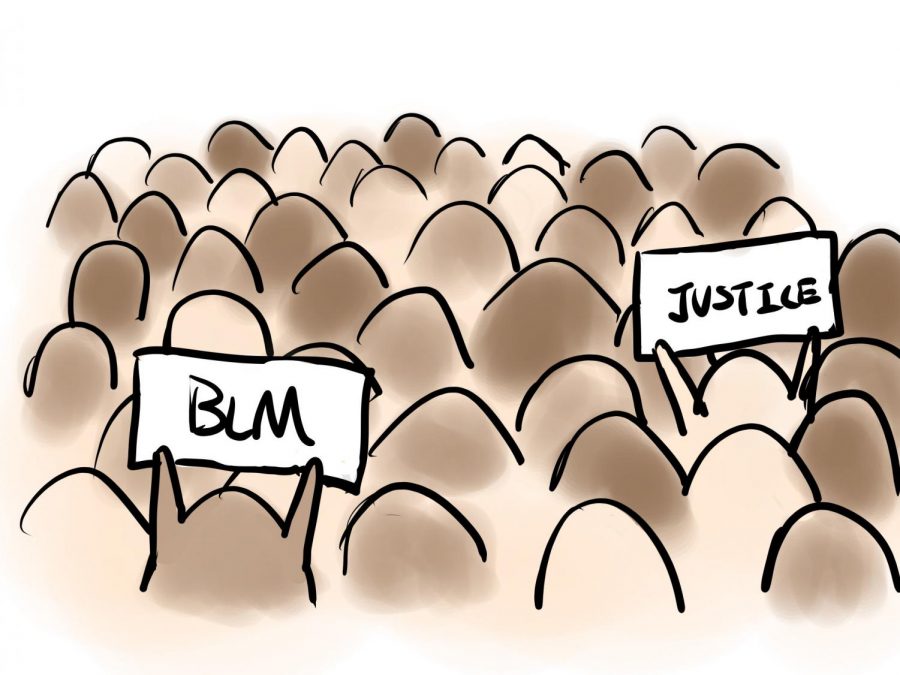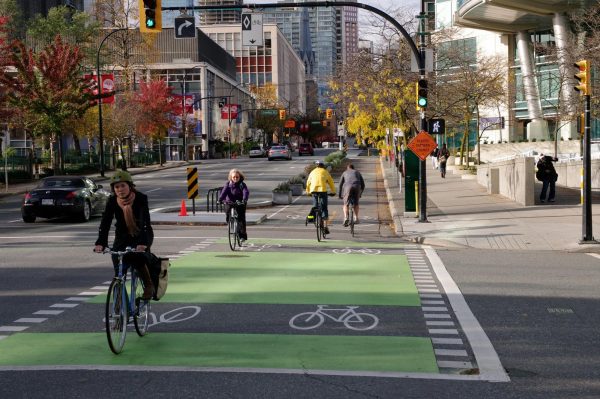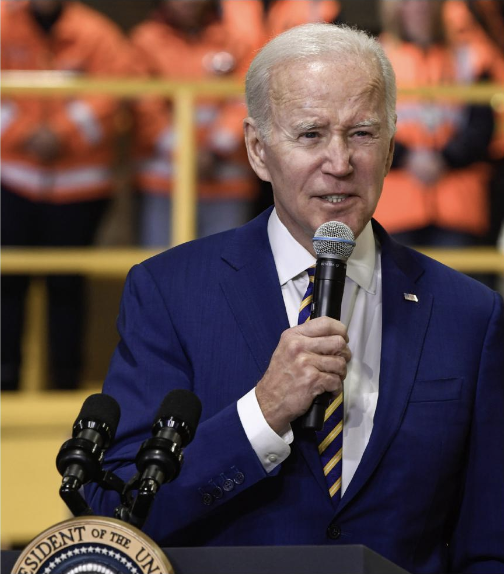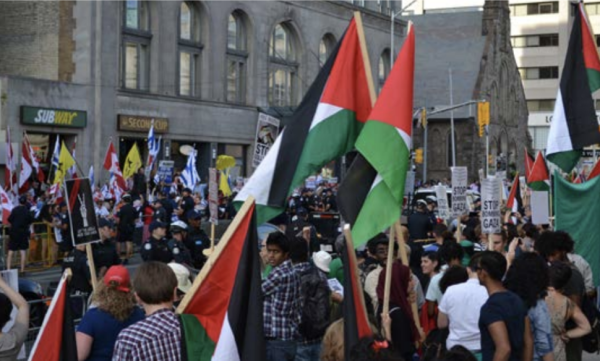Opinion: America — Land of the Free?
November 13, 2020
On May 25, 2020, Derek Chauvin knelt on George Floyd’s neck for 8 minutes and 46 seconds, ending blood flow to the brain and ultimately killing Floyd. On March 13, law enforcement raided Breonna Taylor’s apartment and shot her eight times, eventually killing her. Both Floyd and Taylor’s stories have inspired worldwide protests for equality for black lives.
On May 26, 2020, protesters took to the streets to celebrate the life of Floyd and to implore the United States government to reform law enforcement and to raise awareness about the injustice and inequality of the past few centuries. Black Lives Matter protests took the United States by storm; according to CNN, over 10,000 protests took place from the day after Floyd’s death to the start of September. The movements in the United States have inspired Black Lives Matter protests worldwide, including gatherings in Kenya, England, Brazil, Australia, and dozens of other countries.
The Black Lives Matter movement began in 2013, after 17-year-old Trayvon Martin was shot by George Zimmerman while walking home from a convenience store. The goal of these protests and this movement is to create equality and to correct the injustices that people of color must deal with everyday.
A popular sentiment in these protests is the cry to defund the police. While some may think that defunding the police means to take all funding away, this is incorrect. Defunding the police is a restructuring of the funds within the community. Money that would go to law enforcement may be reinvested into education, mental health facilities, healthcare, and other important aspects of the community that can be bolstered.
Reflecting back on history, we see that there are still many things that need to be changed. The 13th amendment states that “neither slavery nor involuntary servitude, except as a punishment for crime whereof the party shall have been duly convicted, shall exist within the United States, or any place subject to their jurisdiction.” Our constitution allows slavery to still exist, but it has been masked under the name of prison labor. But, who are in the prisons? Statistics show that black men make up roughly 6.5% of the U.S. population, but they are 40.2% of the prison population. However, this is the most shocking statistic: there are more black people incarcerated today than there were slaves in 1850.
This loophole in the constitution has been exploited by the government since its ratification in 1865 because it allowed for access to cheap labor and supported the deeply rooted racism in the American people. After the emancipation of slaves, the United States lost their main labor supply and needed to replace slave labor, and so prison labor was born. Former slaves were thrown in jail on false accounts of crime and forced to work in prisons. Convict leasing (states lease prisoners to farmers/businesses) became increasingly relevant and soon morphed into the newly reformed slavery. Prisoners today are being forced to complete labor for almost no pay, and huge corporations like Walmart and Whole Foods use this cheap labor to produce their goods and sell them at low prices. For example, in one Colorado prison, prisoners were paid 74 cents/day to produce goods like goat cheese for Whole Foods.
Mass incarceration in the United States is intrinsically linked to this problem because while the U.S. population is about 5% of the total world population, we make up almost 25% of the entire prison population. Prison populations have been growing exponentially in recent times, and instead of becoming centers of rehabilitation/punishment, prisons have become a business. In fact, private prisons are hugely profitable business in the United States, further exemplifying the idea of the prison-industrial complex in which people and business benefit economically from the prison system.
President Nixon’s infamous War on Drugs is a huge indicator of this injustice in history, more specifically the difference in jail time for possession of crack cocaine versus powder cocaine. Crack cocaine was more prevalent among lower income black communities, while powder cocaine was primarily used among higher income white families. Both powder cocaine and crack are ultimately the same drug, but higher sentences were given to people in possession of crack versus powder cocaine, further emphasizing the racial inequity faced by black people. President Obama’s Fair Sentencing Act largely overturned the previous drug laws about cocaine, but there are still people serving time for unfair, racist-rooted crack charges from prior sentences.
Did you know that if you go to prison, you lose the right to vote? You are labeled a felon, making it nearly impossible to find a decent job, ultimately condemning you to the bottom of society. Plea bargains are closely tied to this injustice as the idea of the plea bargain is to reduce the sentence of the defendant if they plead guilty (reducing an elongated trail). However, people often are scared of going to trial and receiving a worse sentence for a crime they may or may not have commited or are unable to afford the expenses of going to trial, so they plead guilty and are labeled a felon for the rest of their lives. Thus, when people of color are unfairly profiled and charged for a crime they did not commit, they are labeled a felon and lose many of the rights that United States citizens pride themselves for having: freedom, freedom to vote, and freedom to achieve upward mobility. Another shocking statistic states that roughly only 3% of people charged with a crime go to trial, meaning the other 97% either take the plea bargain or their case is handled through a different route (case dismissed, dropped charges, etc.) And if we look back, the majority of people who make up the prison population are black men. The system is broken, and it is purposefully condemning black people to the bottom of society, leading to generations of black families unable to move upward in society. This needs to be fixed. We have long ways to go, and only we the people can do this. Stay informed, attend protests, spread awareness, and be a part of the change!
Over the summer, Black Lives Matter protests took place miles from Sage Hill School on PCH in Corona del Mar. Masked and socially distanced, many of us attended these protests with our families. It was striking to see the contrast between the sentiments displayed at the protest and those on display during the many “floatillas” that took place this summer supporting the reelection of President Trump. Sage Hill faculty, staff, administration, and students who are over the age of 18 had a choice to make on Nov. 3. The stark contrast between the two candidates could not be clearer, and one’s position on Black Lives Matter merits serious consideration before voting. The American people voted in favor of the Black Lives Matter Movement, and hopefully we will see much needed change made in the near future.





